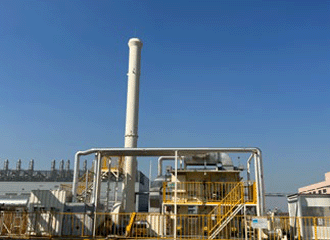Controlling Chemical Substances
Chemical substances have become an essential part of our lifestyles. On the other hand, to control the impact of chemical substances on humans and ecosystems, countries are strengthening laws and regulations related to their use and management.
The Kubota Group sees controlling chemical substances as one of its materiality issues, and has been advancing initiatives toward reducing the burden on the environment from chemical substances, including the reduction of VOCs (volatile organic compounds) generated in coating processes at production sites, as well as the replacement of fluorocarbons and the prevention of leakage.
- 【ESG Report】Controlling Chemical Substances
- Medium- and Long-Term Environmental Conservation Targets and Results
Activities towards achieving SDGs
| Related SDGs and targets |
 |
|---|---|
| Major Activity Content |
|
| 2025 Activity Targets (KPIs) |
|
Measures to Reduce VOCs
The Kubota Group has established the Medium-Term Environmental Conservation Targets and is working to reduce the emissions of VOC at production sites. The Group has been promoting the risk management of the chemical substances we handle and the reduction of VOC-containing materials, such as paint and thinner at production sites. Especially in the painting process, not only have we reduced the amount of wasted paint by improving the efficiency of coating, but we are making every effort to stabilize VOC removal efficiency at sites that have deodorization equipment.
-

Kubota Engine (WUXI) Co., Ltd. (China) has installed a regenerative thermal oxidizer (RTO) and is working to reduce its VOC emissions.
Control of Ozone-depleting Substances
The Kubota Group prohibits specified CFCs, which are ozone-depleting substances, from being contained in products or added*1 in manufacturing processes of products. In Japan, replacement of materials containing dichloropentafluoropropane with substitute materials was completed during FY2016, and no ozone-depleting substances subject to notification under the PRTR Law*2 are handled and released at present.
In Japan, CFCs that are used in air-conditioners and refrigerating or freezing equipment as refrigerant, are thoroughly managed to control leakage, in accordance with the standards specified by the Fluorocarbons Emission Control Law*3.
- *1.For HCFC, intentional adding in products as refrigerant or heat insulator is prohibited.
- *2.Act on Confirmation, etc. of Release Amounts of Specific Chemical Substances in the Environment and Promotion of Improvements in the Management Thereof
- *3.Act on the Rational Use and Proper Management of Fluorocarbons
Control of Air Pollutants
The Kubota Group has set its own control values that are stricter than the emission standards of relevant laws and regulations. In order not to allow the exceeding of standard values, the Group implements thorough daily management activities, such as monitoring operation of the smoke and soot-generating facilities and inspecting the dust-collecting equipment.
Reduction of Chemical Substances Contained in Products
The Kubota Group has set rules for identifying and properly managing chemical substances in products in order to comply with REACH Regulations* in Europe and other chemical substance regulations.
Since 2010, chemical substances in products have been classified as one of the three following categories and managed appropriately. With cooperation from our suppliers, we investigate chemical substances in products on a global basis.
- The European Union (EU) Regulations for Registration, Evaluation, Authorization and Restriction of Chemicals
- Three Control Levels -
- Substances to be Prohibited: Should not be contained in products
- Substances to be Restricted: Should not be contained in products under certain conditions and applications
- Substances to be Controlled: Presence in products should be recognized